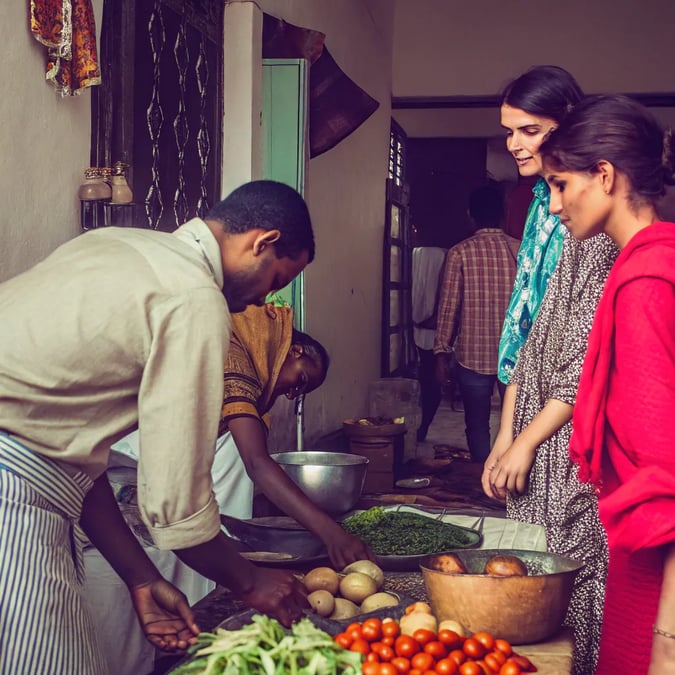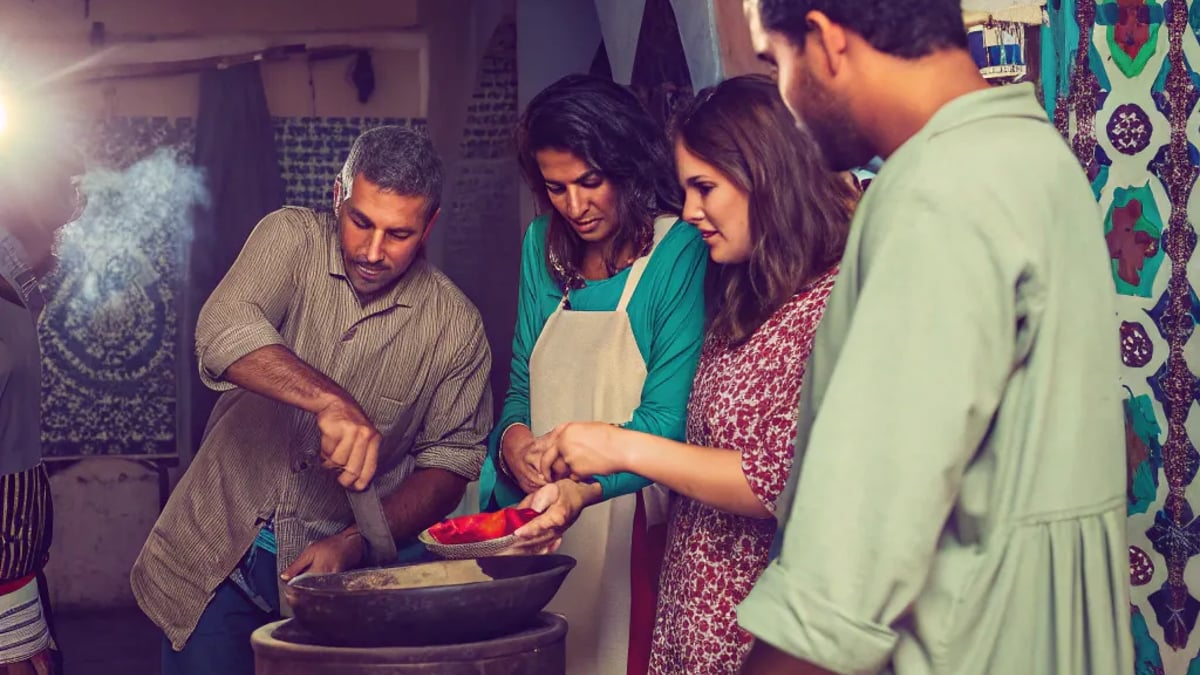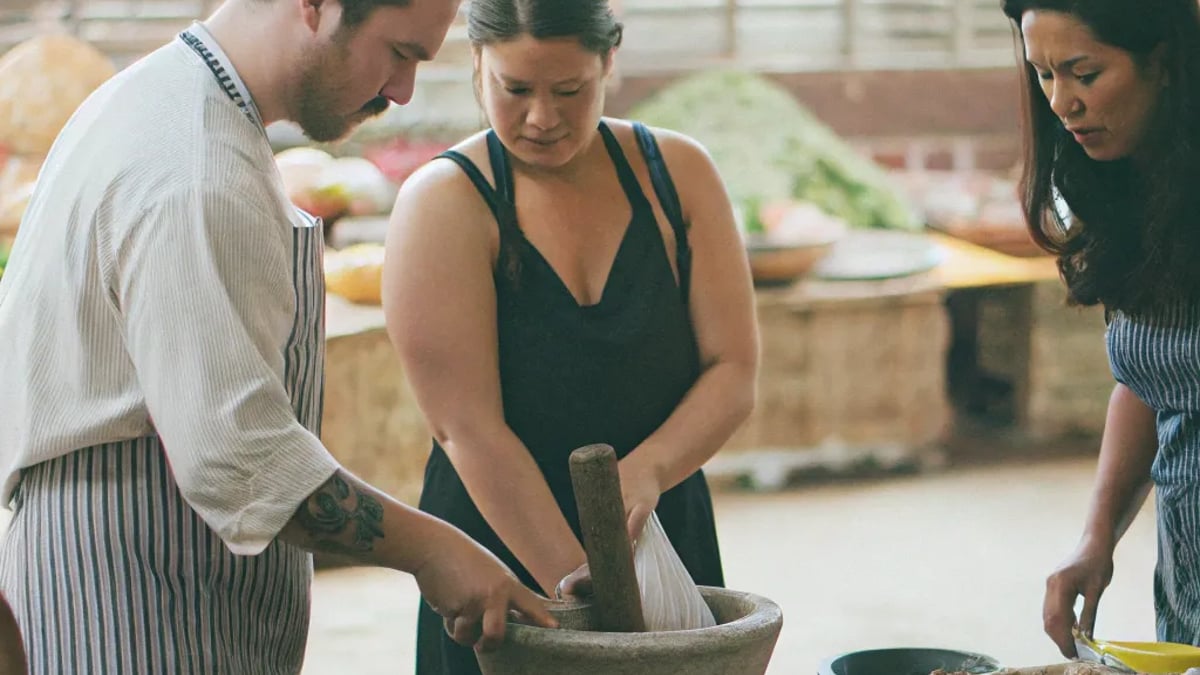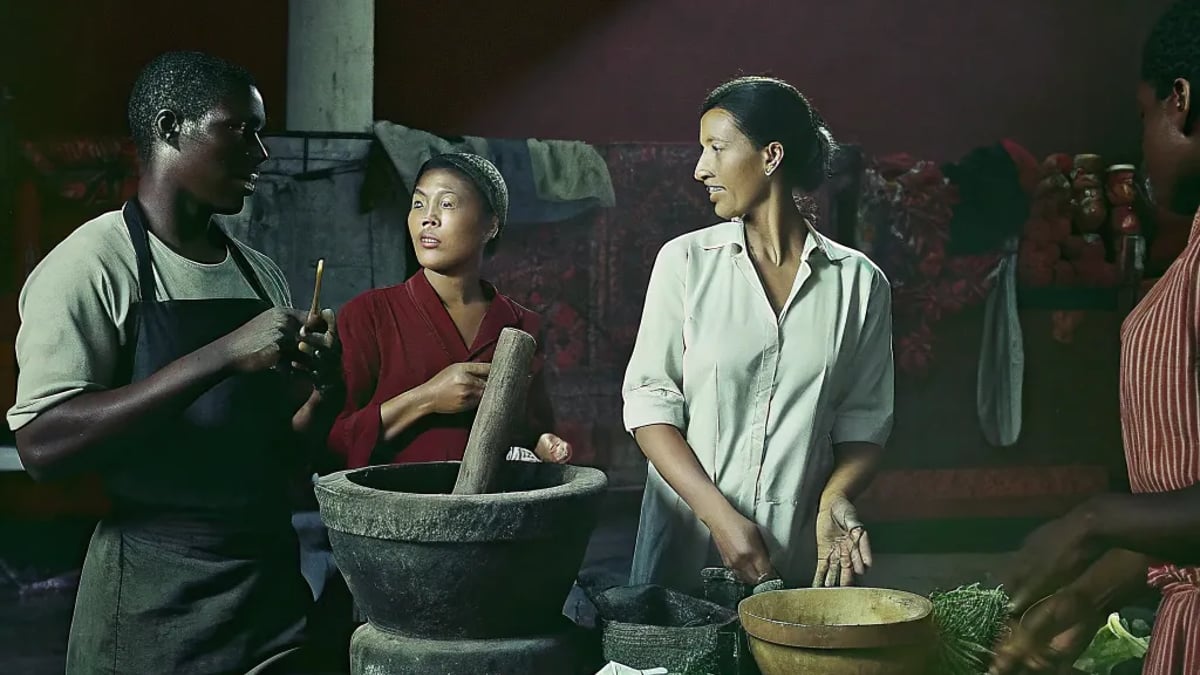
There's something magical about learning to cook a dish from someone who's grown up with it. The way they casually toss in spices without measuring, the stories they share about family gatherings where this recipe took center stage, or the specific technique passed down through generations. Food isn't just sustenance—it's a living, breathing cultural artifact that can teach us more about a place and its people than any guidebook.
The Global Rise of Culinary Tourism
The desire to experience authentic local cuisine has transformed how many of us travel. Gone are the days when tourists sought familiar chain restaurants in foreign countries. Today's travelers are hungry for genuine cultural experiences, and food has become the perfect gateway.
Anna Roth, a cooking class host with The Table Less Traveled, captures this sentiment perfectly. "Ever since I can remember, my favorite memories have involved travel, music, and trying delicious food," she shares on the organization's website. This connection between memorable travel experiences and food is driving more travelers to seek out immersive culinary activities.
What makes cooking classes and market tours so special is their interactive nature. Unlike passive sightseeing, these experiences engage all your senses while creating meaningful connections with locals.

From Markets to Meals: The Complete Cultural Journey
Market tours followed by cooking classes offer a comprehensive cultural experience that few other activities can match. The journey typically begins in bustling local markets—colorful, chaotic places where everyday life unfolds unfiltered.
In Thailand's northern regions, for example, markets showcase the incredible diversity of ingredients that make Thai cuisine so distinctive. As one traveler shared on Hey Dip Your Toes In, "Through cooking classes, local markets, and vibrant street food scenes, I saw firsthand how Thai cuisine connects people—bridging cultures" even while navigating dietary restrictions like gluten intolerance.
These market visits serve multiple purposes:
- Learning to identify authentic ingredients
- Understanding seasonality and regional variations
- Practicing basic language skills through transactions
- Observing local shopping habits and food priorities
After selecting ingredients comes the transformation—turning market treasures into traditional dishes under expert guidance. This process reveals cultural values, family traditions, and historical influences that have shaped the cuisine over centuries.

Cultural Exchange Through the Universal Language of Food
What makes culinary experiences so effective for cultural exchange is their universal appeal. Everyone eats, and sharing food traditions creates an immediate connection that transcends language barriers.
The Nibble Kitchen in Somerville, Massachusetts exemplifies this approach. Their program is "part of bigger initiative that celebrates culinary-cultural exchange," according to their website. Through classes and events, they create spaces where immigrant and refugee chefs can share their food heritage while building community connections.
This two-way exchange benefits everyone involved:
- Visitors gain authentic culinary skills and cultural insights
- Local hosts earn income while preserving traditional knowledge
- Communities develop pride in their culinary heritage
- Cross-cultural understanding grows through shared experiences
As one participant in a Japanese cooking class noted, these experiences go beyond just learning recipes. The AirKitchen platform in Japan explicitly promotes their classes as "Japanese Cultural Exchange," where cooking becomes the medium through which deeper understanding develops.

How Do Cooking Classes Bridge Cultural Divides?
Cooking classes create unique opportunities for meaningful cultural connections that might otherwise be difficult to establish. When you're struggling together to fold a perfect dumpling or laughing over a failed attempt to flip a proper tortilla, barriers dissolve naturally.
This happens for several reasons:
First, cooking creates a level playing field. Even accomplished professionals become beginners when learning techniques from another culture. This shared vulnerability opens space for genuine exchange.
Second, the informal setting encourages natural conversation. Unlike structured tours, cooking classes allow organic discussions about everything from ingredient substitutions to family traditions and cultural celebrations.
Third, the shared accomplishment of creating a meal together builds camaraderie. Breaking bread is a universally recognized symbol of peace and connection across nearly all cultures.
Let's Eat The World, a culinary tourism platform, emphasizes this aspect: "Sharing a meal with friends and family is a" fundamental way of building relationships across cultural differences. Their Colombia experiences combine "cooking classes, market tours, and cultural excursions" to create comprehensive understanding.
Beyond Recipes: The Stories Behind the Dishes
The most memorable cooking classes go beyond mechanics to share the cultural context of dishes. A good instructor doesn't just teach you how to make pad thai—they explain its history, regional variations, and significance in Thai culture.
These stories transform simple recipes into cultural narratives:
- How historical trade routes introduced new ingredients
- The influence of religious practices on cooking techniques
- How economic conditions shaped traditional dishes
- The role of specific foods in celebrations and ceremonies
A Japanese cooking class in Kyoto might explain the philosophical principles behind traditional kaiseki cuisine, while a Mexican cooking class could reveal how pre-Columbian ingredients continue to influence modern dishes despite centuries of colonial influence.
Finding Authentic Culinary Experiences
Not all cooking classes offer the same depth of cultural exchange. The most rewarding experiences typically share certain characteristics:
- Small group sizes that allow personal interaction
- Home settings rather than commercial kitchens
- Local instructors with personal connections to the cuisine
- Market components that show food in its cultural context
- Emphasis on stories alongside techniques
The Nomadic Vegan recommends seeking classes that include market visits: "While AirKitchen does not offer a food tour, some of their cooking classes do include a market visit," noting how this comprehensive approach provides deeper understanding.
When researching options, look beyond polished tourist-oriented operations to find more authentic experiences. Community-based initiatives like Nibble Kitchen, which works with immigrant communities, often provide more genuine cultural exchange than slick commercial operations.
Creating Space for Cultural Preservation and Innovation
One overlooked aspect of culinary tourism is its role in preserving traditional food knowledge. As younger generations in many societies move away from traditional cooking, tourist interest can actually help revitalize and document disappearing culinary traditions.
In northern Thailand, for instance, cooking schools have become repositories of traditional knowledge, with instructors documenting family recipes that might otherwise be lost. Meanwhile, in Japan, the growing interest in traditional Japanese cooking techniques has helped revive artisanal food production methods.
This preservation isn't static, though. Cultural exchange through food also drives innovation. When travelers return home with new techniques and flavor combinations, they incorporate them into their own cooking—creating fusion dishes that represent our increasingly interconnected world.
The Lasting Impact of Culinary Cultural Exchange
The impact of these experiences extends far beyond vacation memories. Participants often report lasting changes to their cooking habits, grocery shopping patterns, and even worldviews after meaningful culinary exchanges.
Learning to make authentic pad thai or fresh pasta from scratch creates confidence to explore other aspects of those cultures. The Thai cooking class participant might later attend a Thai language class, while the Italian pasta-making student might develop interest in Italian cinema or history.
Food becomes a gateway to broader cultural understanding—and in our divided world, these personal connections matter more than ever. When we understand the care and tradition behind another culture's cuisine, it becomes harder to maintain stereotypes or prejudices about its people.
As we continue seeking authentic travel experiences, cooking classes and market tours offer something increasingly precious: genuine human connection across cultural differences, mediated by the universal joy of good food shared in good company.
After all, as the old saying goes, the quickest way to someone's heart is through their stomach—and perhaps the quickest way to understand a culture is through its kitchen.
Tags

About Maya Caldwell the Author
Maya Caldwell is a seasoned digital nomad with over a decade of experience navigating the global work-from-anywhere lifestyle. She specializes in crafting innovative travel strategies that maximize productivity and adventure for remote workers.
Recommended Articles
No Rinse Body Wipes Seniors Love for Easy Clean Anytime
Discover the convenience of no rinse body wipes for seniors, promoting hygiene and making personal care easier anytime, anywhere.
Ranked: The Candy Bars Americans Love Most
Discover the fascinating world of America's favorite candy bars, where classic flavors like Snickers and Reese's Peanut Butter Cups reign supreme while newcomers and artisanal treats vie for attention in a landscape of evolving tastes. From regional preferences to the exciting convergence of candy and protein bars, this article unveils the sweet dynamics reshaping America's confectionary cravings and hints at the irresistible trends shaping the future of our sweet tooths.
The Candy Bar Everyone’s Fighting Over This Year
Dive into the candy craze of 2025 as an unexpected nostalgic chocolate bar sweeps the sweet-toothed nation, skyrocketing to the top of candy rankings and inciting store aisle skirmishes fueled by scarcity, social media buzz, and celebrity endorsements. Discover how this simple yet sensational confection has turned into a coveted status symbol and whether it truly lives up to the hype, as it reshuffles long-standing favorites on the candy shelves to become the season's hottest indulgence.
Fun Hobbies Seniors Are Loving in 2025
Discover how seniors are reshaping retirement life with trending hobbies in 2025 that blend creativity, activity, and social connection, from captivating photography and dance classes to innovative virtual reality adventures. Whether capturing meaningful moments or exploring new talents, these pursuits are enhancing older adults' mental and physical wellbeing, offering a vibrant, fulfilling lifestyle for every interest and ability.
Living with a Host Family: The Deepest Travel Experience I’ve Had
Dive into the transformative world of cultural immersion as the author shares their profound experiences of living with host families across the globe, from mastering homemade tortilla española in Spain to embracing the art of kintsugi in Japan. This article not only highlights the joys and challenges of navigating new family dynamics but also offers practical tips on finding the perfect host family for a truly authentic travel experience that promises lifelong connections and insights far richer than fleeting tourist encounters.




